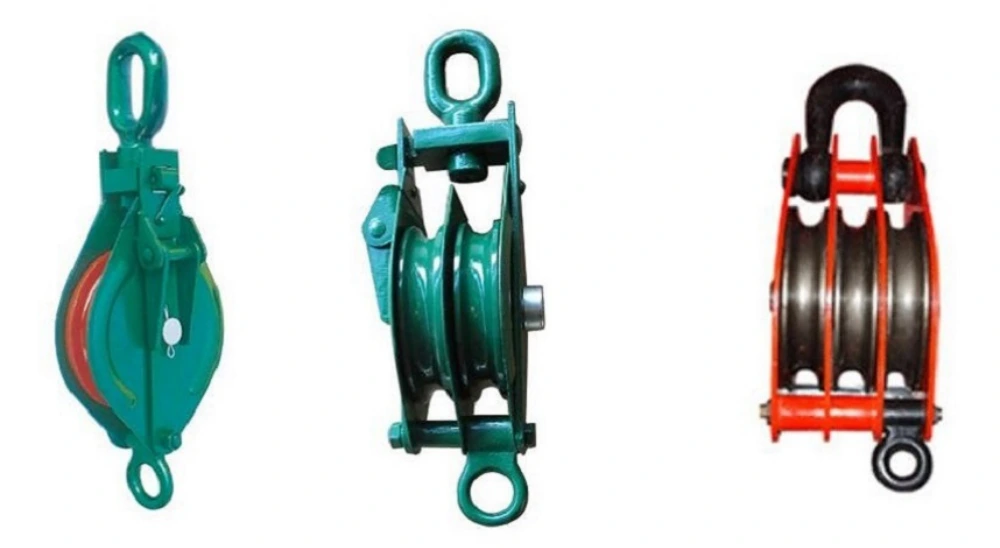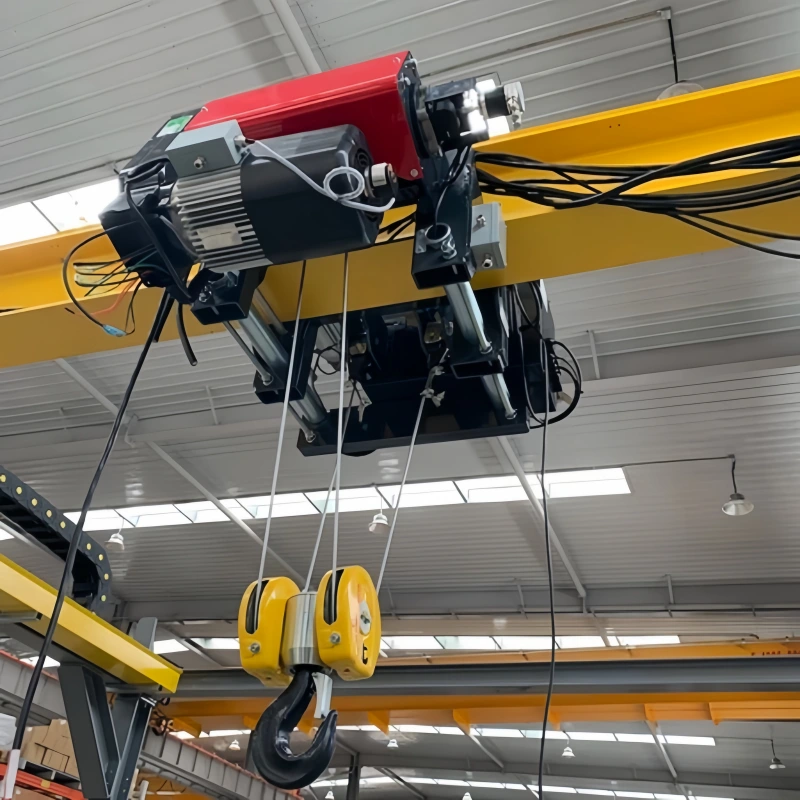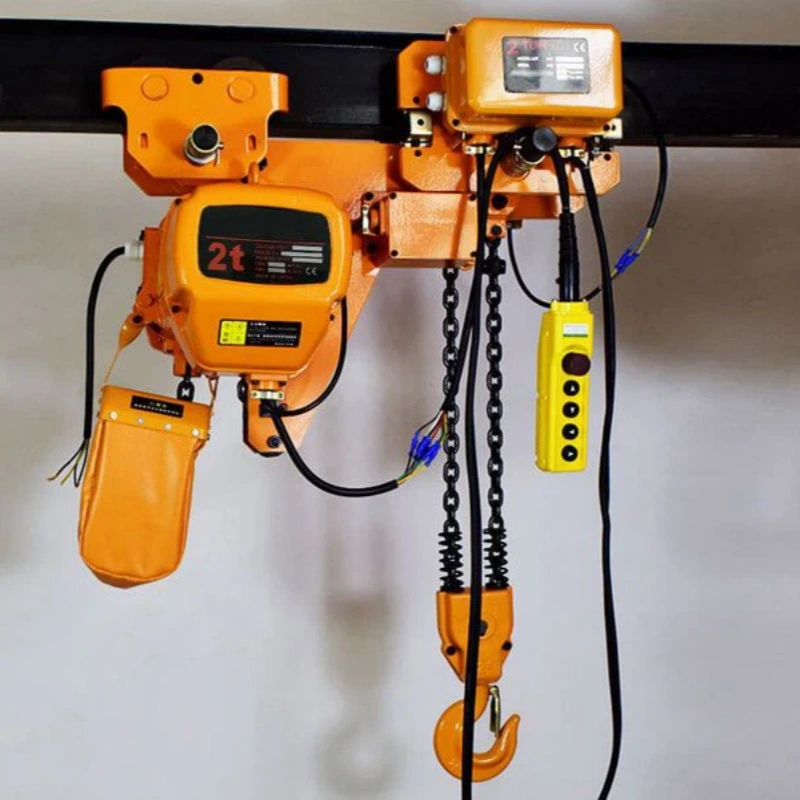You rely on pulley block systems to move heavy loads with precision and safety. A pulley block combines one or more pulleys with a frame, allowing you to change the direction of force and reduce the effort needed in lifting operations.
In construction, marine, or industrial settings, using certified pulley and hoist equipment—like those from Powerful Machinery—means you meet safety standards and protect your team. Always use equipment marked with safe working loads, attach loads properly, and keep certification records to ensure every lifting task runs smoothly.
Dos | Don’ts |
|---|---|
Use only certified lifting equipment, marked with its safe working load, which has been regularly examined to ensure it is fit for purpose. | Do not allow tackle to be damaged by being dropped, dragged from under loads, or subjected to sudden loads. |
Keep the reports of any examinations, as well as any declarations of conformity or test certificates. | Avoid trying to move weights that are too heavy and exceed the load limit of the machine. |
Make sure the load is properly attached to the lifting equipment. | Do not let untrained workers plan the lift or use the equipment. |
Key Takeaways
Pulley blocks help lift heavy loads with less effort, making lifting tasks safer and more efficient.
Always use certified pulley blocks marked with safe working loads to ensure safety and reliability during operations.
Regular inspections and maintenance of pulley blocks prevent failures and extend their lifespan.
Different types of pulley blocks, like single and double sheave blocks, serve specific lifting needs based on load requirements.
Snatch blocks offer flexibility for quick rigging and direction changes, making them ideal for marine and heavy-duty applications.
Pulley Block Systems Overview

Pulley Block Definition
You encounter pulley block systems in many industrial environments. A pulley block is a mechanical assembly that contains one or more pulleys, also known as sheaves. You use ropes, cables, or chains with these assemblies to lift or move heavy loads.
The frame secures the pulley, allowing you to transfer force efficiently. In mechanical engineering, this design helps you achieve a significant mechanical advantage, making lifting tasks safer and easier.
Powerful Machinery manufactures pulley blocks that meet strict international standards, ensuring reliability and safety for your operations.
Pulley Block Components
When you examine pulley block systems, you notice several key components that work together to deliver performance and safety. The key components of a pulley block include:
The frame or housing, which holds the pulleys securely.
One or more pulleys (sheaves) that guide the rope or cable.
Axles or bearings that allow the pulleys to rotate smoothly.
Attachment points such as hooks, shackles, or eyes for connecting to loads or lifting equipment.
Safety features like quick-release mechanisms and overload protection.
Powerful Machinery’s Pulley & Blocks product line uses high-strength steel and corrosion-resistant materials. You benefit from heat-treated components that resist wear and maintain structural integrity.
The company follows regulatory compliance standards such as OSHA, ISO, and CE, so you can trust the safety and performance of each block.
Material/Standard | Description |
|---|---|
High-strength steel | Preferred for frames, gears, and pulleys due to strength and resistance to deformation. |
Corrosion resistance | Stainless or galvanized steel is used in moist or chemical environments to prevent corrosion. |
Heat treatment | Increases hardness and reduces wear on chains and pulleys. |
Lightweight housing materials | Aluminum alloys are used to reduce weight while maintaining structural integrity. |
Regulatory Compliance | Must meet safety and performance standards from OSHA, ISO, and CE for reliability and safety. |
Load testing standards | Blocks are tested under real-world conditions to verify performance. |
Safety features | Includes anti-slip mechanisms, overload protection, and fail-safe designs for safe operation. |
How Does a Pulley Block Work?
You use pulley block systems to gain mechanical advantage in lifting and rigging tasks. The arrangement of pulleys determines how much force you need to lift a load.
When you set up a block and tackle, you increase the number of rope segments supporting the load. This setup multiplies the mechanical advantage, allowing you to lift heavier objects with less effort.
The efficiency of a pulley block depends on the number of pulleys and the quality of the components. As you add more pulleys, you increase the mechanical advantage, but friction losses also rise. Softer ropes can help reduce friction, improving efficiency.
Powerful Machinery designs pulley blocks with precision bearings and smooth sheaves to minimize friction and maximize performance.
Tip: Always inspect the tapered bore on the pulley and clean any dirt before installation. Secure the assembly with cap screws or set screws, depending on the mounting method. Repeat the process for each shaft connected to your equipment.
Evidence Description | Key Points |
|---|---|
Reeving to advantage | Aligns pulling force with load movement, minimizing friction. |
Reeving to disadvantage | Increases friction losses without improving velocity ratio; may be ergonomically beneficial in certain scenarios. |
Friction impact | Increased length of rope needed offsets mechanical advantage; friction can hinder load release. |
Cumulative effect of pulleys | Efficiency decreases with more pulleys; significant friction losses can occur. |
Rope stiffness | Softer ropes yield better efficiency due to reduced friction. |
You must also maintain your pulley block systems to prevent common failure points. Routine inspections help you identify issues early. Powerful Machinery recommends keeping rolling components clean and aligned, inspecting head pulley lagging, and selecting the right belt for each application.
These practices ensure your block and tackle systems perform reliably and safely.
Pulley blocks from Powerful Machinery offer robust construction, advanced safety features, and certified quality. You can trust these systems to deliver consistent mechanical advantage and efficiency in demanding industrial environments.
Types of Pulley Blocks

You encounter many types of pulley blocks in industrial and construction environments. Each type serves a unique purpose and offers specific advantages for lifting and rigging tasks. Powerful Machinery provides a wide range of certified pulley blocks, including specialized options for demanding applications.
Classification by Purpose
You select pulley blocks based on the lifting task. Some blocks are designed for general lifting, while others handle specialized operations. For example, you use a single pulley block for light-duty tasks, such as lifting tools or small machinery.
When you need to move heavier loads, you rely on a double pulley block or multi-sheave block to achieve increased mechanical advantage. Powerful Machinery’s Pulley & Blocks product line covers both light and heavy-duty requirements, ensuring you find the right solution for your project.
Tip: Always check the block’s certification before use. Standards from organizations like OSHA, ASME, and ANSI guarantee safety and reliability.
Organization | Role | Key Functions |
|---|---|---|
OSHA | Enforcer | Inspects workplaces, issues citations, and can shut down operations for violations. |
ASME | Developer | Creates standards for equipment design, inspection, and training. |
ANSI | Facilitator | Accredits organizations and approves standards to promote safety. |
Classification by Sheaves
You choose between single pulley block and double pulley block designs depending on your load requirements. A single pulley block uses one sheave and suits lighter loads. A double pulley block, or multi-sheave block, distributes the load across multiple sheaves, increasing capacity and efficiency.
Type of Pulley Block | Load Distribution | Application |
|---|---|---|
Single-Sheave | Simpler, less load distribution | Light-duty lifting (e.g., tools, small machinery) |
Multi-Sheave | Improved load distribution, increased capacity | Heavy-duty lifting (e.g., large machinery, mining equipment) |
You gain better load control and smoother operation with multi-sheave pulley blocks. Powerful Machinery offers both single and double pulley block options, crafted from high-strength materials for durability.
Special Types: Snatch Block, Steel Rope Pulley
You encounter special types of blocks for advanced rigging needs. The snatch block stands out because you can open it to fit a wire rope without threading the entire line.
This design makes rigging faster and safer, especially in marine and construction settings. Powerful Machinery’s Snatch Block Shackle features a forged alloy body and roller bearings for smooth operation.
Steel rope pulleys are another specialized type. You use these blocks with steel cables for light lifting tasks. Powerful Machinery’s steel rope pulley offers corrosion resistance and customizable options for different environments.
Feature | Pulley Block | Snatch Block |
|---|---|---|
Design | Always closed; requires threading the line through the axle | Designed to open with a gate for easy wire rope fitting |
Usage | Directs the rope while loaded; multiplies lines for lifting | Similar function, but allows for easier rigging due to its opening design |
Note: The global market for pulley blocks continues to grow, especially in Asia-Pacific, where rapid industrialization drives demand. You see steady growth in Europe and North America, with strong quality standards and advanced technology.
Region | Growth Characteristics | Key Challenges |
|---|---|---|
North America | Strong adoption of advanced technologies, substantial R&D investment, and mature distribution channels. | Market saturation and price pressure from competition. |
Europe | Steady growth driven by quality standards and strong manufacturing bases. | Regulatory complexity and economic variability. |
Asia-Pacific | Fastest-growing region with rapid industrialization and large-scale infrastructure projects. | Disparate regulatory regimes and supply-chain constraints. |
Latin America | Moderate growth with increasing investments in infrastructure. | Political instability and currency volatility. |
Middle East & Africa | Niche opportunities tied to infrastructure modernization and energy projects. | Uneven market development and logistical barriers. |
You benefit from Powerful Machinery’s certified pulley blocks, snatch blocks, and steel rope pulleys, which meet international standards and deliver reliable performance in every region.
Benefits of Pulley Block Systems
Efficiency and Safety
You gain significant benefits when you use pulley block systems for lifting and rigging. These systems provide mechanical advantage, which means you can lift heavier loads with less effort.
The arrangement of pulleys redistributes forces, reducing strain on your team and improving overall efficiency. When you set up a block and tackle, you multiply your lifting power and make load handling safer and more controlled.
Pulley block systems allow you to move substantial weights with minimal exertion.
Block and tackle arrangements reduce the effort needed for heavy lifting by spreading gravitational forces.
Proper anchor points maximize efficiency and safety in every lifting operation.
Modern pulley blocks from Powerful Machinery include advanced safety features to protect you and your crew. You find brake systems that prevent loads from slipping, and pre-operational checks help you spot issues before they become hazards.
Accurate load assessment and secure setup ensure you never exceed safe working limits. Only trained personnel should operate these blocks, and emergency stop mechanisms provide a quick response in case of malfunction.
Safety Feature | Description |
|---|---|
Brake System | Prevents the load from slipping or falling. |
Pre-Operational Checks | Visual inspections of chains, hooks, and brakes for safety. |
Load Assessment | Ensures you never overload the block. |
Proper Setup | Secure attachment to stable support and correct rigging. |
Trained Personnel | Only qualified operators handle the equipment. |
Emergency Stop | Allows fast action if something goes wrong. |
First Aid Preparedness | Ensures quick response to injuries. |
Versatility and Value
You benefit from the versatility of pulley blocks in many industries. Whether you work in construction, marine, automotive, or mining, you rely on these blocks for efficient load handling and rigging. Pulley block systems adapt to different environments and tasks, making them a valuable investment for your operation.
Application Area | Description |
|---|---|
Construction | Lifting heavy materials and equipment |
Marine | Essential for rigging and load handling on ships |
Automotive | Moving parts on assembly lines |
Mining | Transporting materials in tough environments |
Theatrical | Stage rigging and set changes |
You also enjoy long-term value from robust construction and easy maintenance. Regular inspections help you spot visible damage, material build-up, or unusual noise.
You keep your blocks in top condition by choosing the right materials, lubricating moving parts, and protecting them from harsh environments. These practices extend the life of your pulley block systems and ensure reliable performance for every heavy lifting or rigging job.
Tip: Store your pulley blocks indoors or cover them with water-repellent tarps to prevent moisture damage and maintain efficiency.
Applications of Pulley Block Systems
Industrial and Construction Applications

You see pulley block systems at work in many industrial and construction settings. These systems help you lift and move heavy materials, making your job safer and more efficient. Powerful Machinery’s certified blocks play a key role in shipping yards, construction sites, manufacturing facilities, and logistics centers.
You rely on these blocks for transporting steel beams, concrete blocks, and machinery. The construction sector drives the demand for pulley block systems, especially with increased infrastructure projects and urban growth.
Here are some common applications of pulley block systems:
You use blocks in shipping yards to hoist heavy machinery and materials.
On construction sites, blocks lift steel beams and concrete blocks.
In manufacturing, blocks move heavy items, saving labor and time.
Logistics teams use blocks for loading and unloading cargo, improving safety.
Application Area | Description |
|---|---|
Shipping Yards | Used for hoisting heavy machinery and materials, improving efficiency. |
Essential for lifting heavy materials like steel beams and concrete blocks. | |
Manufacturing Facilities | Facilitates the movement of heavy items, reducing labor and time. |
Logistics | Aids in loading and unloading cargo, enhancing safety and efficiency. |
Certified pulley block systems enhance safety by reducing physical strain on workers. You experience smoother movement of heavy loads, which prevents sudden jerks and injuries. These systems also boost productivity, allowing you to complete lifting and transporting tasks faster.
Marine and Specialized Uses
You depend on pulley block systems for marine and specialized applications. In marine industries, you use blocks for lifting and hoisting operations on ships and offshore platforms.
These systems change the direction of force applied to wire ropes, helping you lift and move heavy objects. You often pair blocks with winches and masts for construction and installation tasks at sea.
Environmental factors in marine settings influence your choice of materials for blocks. You need corrosion-resistant metals and UV-stabilized plastics to withstand saltwater and sunlight. Chemical resistance and temperature stability are also important for reliable performance.
Environmental Factor | Impact on Material Selection |
|---|---|
Corrosive Saltwater | Highly corrosive to metals; certain plastics are more resistant. |
UV Exposure | It can degrade or make some polymers brittle; UV-stabilized plastics are recommended. |
Chemical Resistance | Essential for environments with solvents or oils; FDA-compliant plastics are ideal. |
Temperature Stability | Extreme temperatures can affect mechanical properties; materials with high thermal stability are necessary. |
You use blocks in mining for transporting ore and equipment. Powerful Machinery’s products help you handle tough environments, whether you work in mining, construction, or marine operations. You trust these certified blocks to deliver safety and value in every application.
Pulley Block vs Snatch Block
Design and Function
You often face the choice between a pulley block and a snatch block when planning lifting operations. Both tools help you move heavy loads, but their designs set them apart.
A pulley block features a fixed frame with one or more sheaves. You must thread the rope or cable through the block from the end. This design works well for standard lifting and rigging tasks.
A snatch block, on the other hand, gives you more flexibility. The side plate opens, so you can insert a rope or cable without threading it through the end. This feature saves you time, especially when working with lines already fixed in place.
The snatch block also allows you to change the direction of force and increase pulling power quickly. You find this especially useful in heavy-duty and marine applications, where Powerful Machinery’s Snatch Block Shackle stands out for its strength and smooth operation.
Tip: Use a snatch block when you need to add a block to a loaded line or redirect force in tight spaces.
Feature | Pulley Block | Snatch Block |
|---|---|---|
Frame | Fixed | Opens on one side |
Rope Insertion | Thread from the end | Insert at any point |
Flexibility | Standard | High, especially for fixed lines |
Common Applications | General lifting, rigging | Heavy-duty, marine, rescue, transport |
Use Cases and Selection
You should consider several factors when choosing between these blocks for your applications. Start by looking at load capacity. Make sure the block can handle your maximum lifting needs.
Next, check rope compatibility. The block must fit the diameter and type of rope or wire you use. Attachment type matters, too. Decide if you need a hook, shackle, or swivel based on your rigging setup. Material and coating are also important. For harsh environments, select blocks made from galvanized or stainless steel.
Snatch blocks shine in the marine and transportation industries. You use them for shipbuilding, cargo handling, offshore drilling, and rescue operations. Their durability and resistance to tough conditions make them a top choice.
The growth in global maritime trade increases the demand for these blocks. Powerful Machinery’s Snatch Block Shackle offers you reliability and safety in these demanding settings.
When you compare the common uses of snatch and pulley blocks, you see that both play vital roles in lifting and rigging. Pulley blocks work best for straightforward lifts. Snatch blocks excel when you need quick integration, direction changes, or extra pulling power.
Note: Always match the block to your specific task for safe and efficient lifting.
Conclusion
You rely on pulley block systems to lift and move heavy loads safely in modern industry. Choosing certified, high-quality pulley products from Powerful Machinery helps you protect your team and improve efficiency.
If you need custom lifting solutions or technical support, you can contact Powerful Machinery for expert advice. For more information, visit their website or explore further reading on advanced rigging techniques.
Tip: Reach out to Powerful Machinery for tailored recommendations that fit your project needs.
FAQ
What is the main advantage of using a pulley block system?
You gain a mechanical advantage with a pulley block system. This means you can lift heavier loads with less effort. The system reduces strain and increases safety during lifting operations.
How do you choose the right pulley block for your project?
You should consider the load capacity, rope diameter, and environment. Always select certified products like those from Powerful Machinery to ensure safety and reliability in your lifting tasks.
How often should you inspect your pulley block system?
You need to inspect your pulley block system before each use. Regular maintenance checks help you spot wear, corrosion, or damage early. This practice keeps your equipment safe and extends its lifespan.
Can you use a pulley block outdoors or in marine environments?
You can use pulley blocks outdoors or in marine settings. Choose corrosion-resistant materials such as galvanized or stainless steel. Powerful Machinery offers products designed for harsh environments, ensuring long-term durability and performance.


